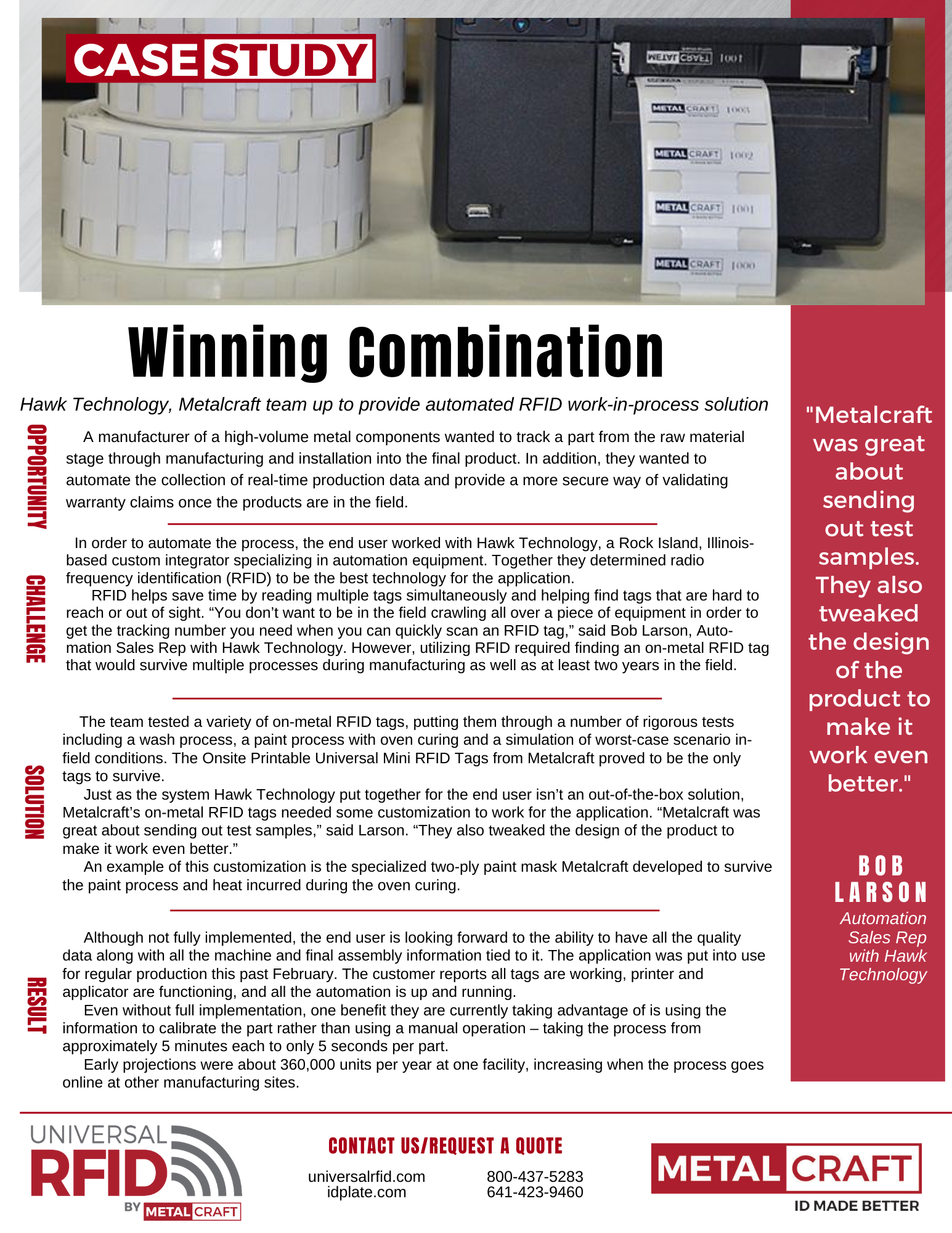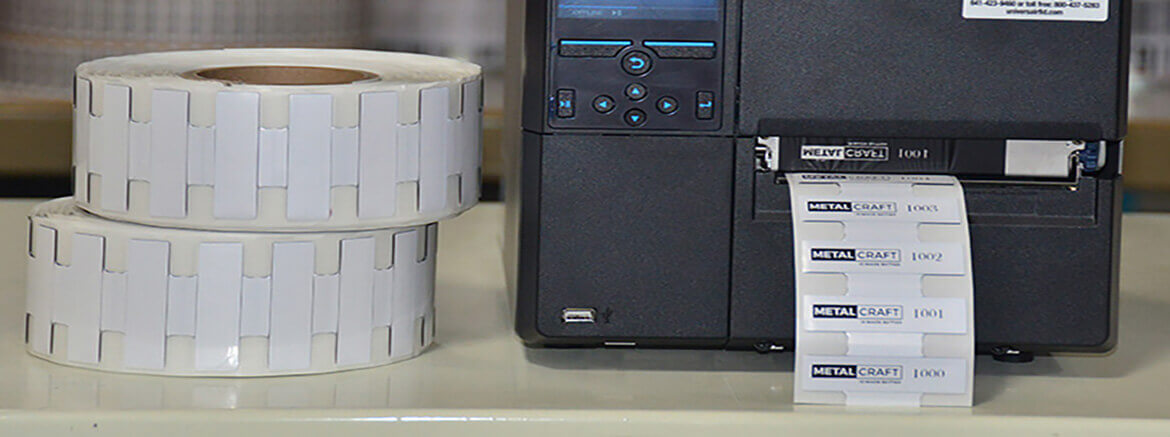Hawk Technology and Metalcraft team up to provide automated RFID work-in-process solution
Opportunity
A manufacturer of a high-volume metal components wanted to track a part from the raw material stage through manufacturing and installation into the final product. In addition, they wanted to automate the collection of real-time production data and provide a more secure way of validating warranty claims once the products are in the field.
Challenge
In order to automate the process, the end user worked with Hawk Technology, a Rock Island, Illinois-based custom integrator specializing in automation equipment. Together they determined radio frequency identification (RFID) to be the best technology for the application.

RFID helps save time by reading multiple tags simultaneously and helping find tags that are hard to reach or out of sight. “You don’t want to be in the field crawling all over a piece of equipment in order to get the tracking number you need when you can quickly scan an RFID tag,” said Bob Larson, Automation Sales Rep with Hawk Technology. However, utilizing RFID required finding an on-metal RFID tag that would survive multiple processes during manufacturing as well as at least two years in the field.
Solution
The team tested a variety of on-metal RFID tags, putting them through a number of rigorous tests including a wash process, a paint process with oven curing and a simulation of worst-case scenario in-field conditions. The Onsite Printable Universal Mini RFID Tags from Metalcraft proved to be the only tags to survive.
Just as the system Hawk Technology put together for the end user isn’t an out-of-the-box solution, Metalcraft’s on-metal RFID tags needed some customization to work for the application. “Metalcraft was great about sending out test samples,” said Larson. “They also tweaked the design of the product to make it work even better.”
An example of this customization is the specialized two-ply paint mask Metalcraft developed to survive the paint process and heat incurred during the oven curing.
Result
Although not fully implemented, the end user is looking forward to the ability to have all the quality data along with all the machine and final assembly information tied to it. The application was put into use for regular production this past February. The customer reports all tags are working, printer and applicator are functioning, and all the automation is up and running.
Even without full implementation, one benefit they are currently taking advantage of is using the information to calibrate the part rather than using a manual operation – taking the process from approximately 5 minutes each to only 5 seconds per part.
Early projections were about 360,000 units per year at one facility, increasing when the process goes online at other manufacturing sites.
To learn more about our asset tracking solutions, contact us today at [email protected].
